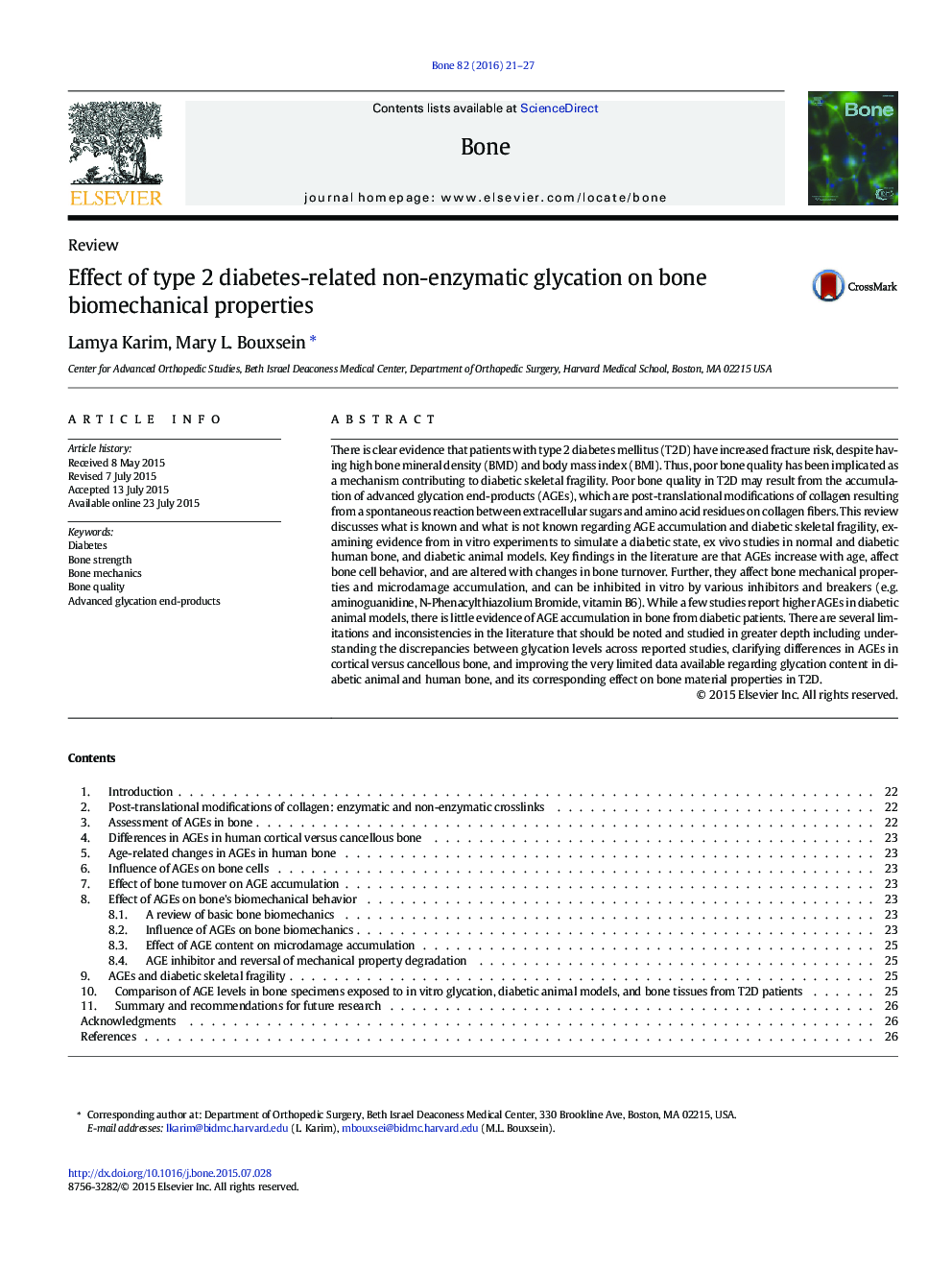| کد مقاله | کد نشریه | سال انتشار | مقاله انگلیسی | نسخه تمام متن |
|---|---|---|---|---|
| 5889080 | 1568137 | 2016 | 7 صفحه PDF | دانلود رایگان |
- Diabetics have increased fracture risk even with high BMD, implicating poor bone quality as a means of skeletal fragility.
- Poor bone quality in diabetics may result from the accumulation of advanced glycation end-products (AGEs).
- It is generally reported that AGEs accumulate in bone, stiffen the collagen matrix, and alter bone's biomechanical properties.
- The effect of AGEs on bone mechanics should be assessed in light of limited and some contradicting data in literature.
There is clear evidence that patients with type 2 diabetes mellitus (T2D) have increased fracture risk, despite having high bone mineral density (BMD) and body mass index (BMI). Thus, poor bone quality has been implicated as a mechanism contributing to diabetic skeletal fragility. Poor bone quality in T2D may result from the accumulation of advanced glycation end-products (AGEs), which are post-translational modifications of collagen resulting from a spontaneous reaction between extracellular sugars and amino acid residues on collagen fibers. This review discusses what is known and what is not known regarding AGE accumulation and diabetic skeletal fragility, examining evidence from in vitro experiments to simulate a diabetic state, ex vivo studies in normal and diabetic human bone, and diabetic animal models. Key findings in the literature are that AGEs increase with age, affect bone cell behavior, and are altered with changes in bone turnover. Further, they affect bone mechanical properties and microdamage accumulation, and can be inhibited in vitro by various inhibitors and breakers (e.g. aminoguanidine, N-Phenacylthiazolium Bromide, vitamin B6). While a few studies report higher AGEs in diabetic animal models, there is little evidence of AGE accumulation in bone from diabetic patients. There are several limitations and inconsistencies in the literature that should be noted and studied in greater depth including understanding the discrepancies between glycation levels across reported studies, clarifying differences in AGEs in cortical versus cancellous bone, and improving the very limited data available regarding glycation content in diabetic animal and human bone, and its corresponding effect on bone material properties in T2D.
Journal: Bone - Volume 82, January 2016, Pages 21-27
